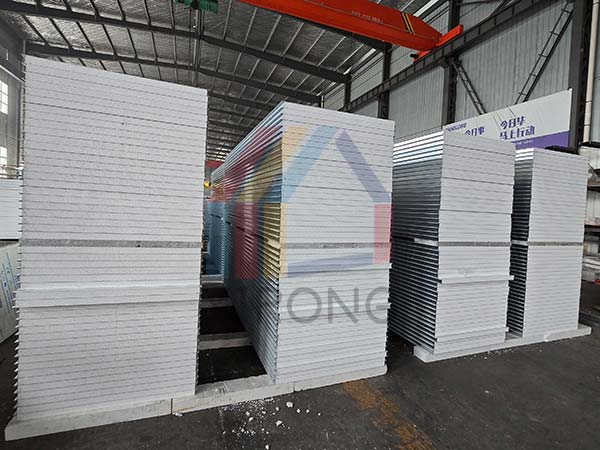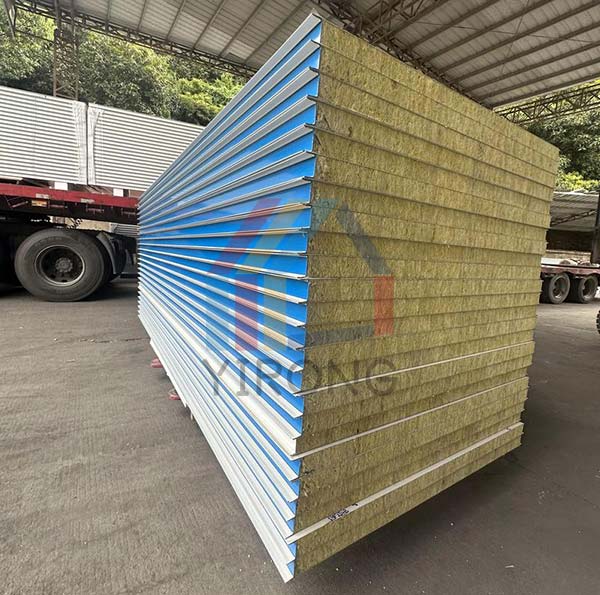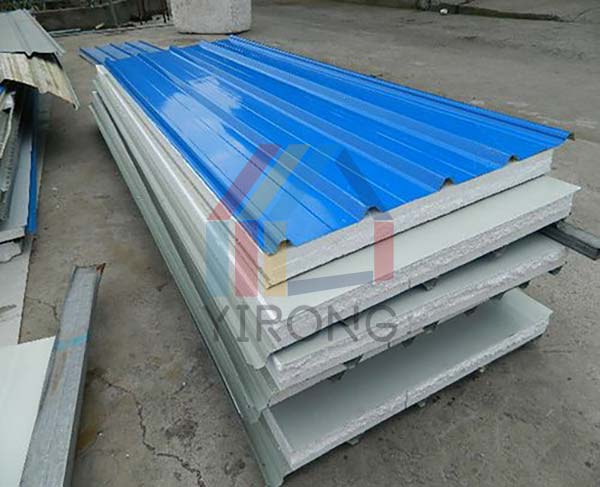Zhengzhou, Henan Province, China
Now Contact: Do you need PU/EPS/Rock Wool sandwich panels?
Zhengzhou, Henan Province, China
Now Contact: Do you need PU/EPS/Rock Wool sandwich panels?
Color steel sandwich panels, as an important building enclosure material, are widely used in modern industrial buildings, storage facilities, and temporary buildings. Its bearing capacity and strength are directly related to the safety and service life of buildings. This article will delve into the mechanical performance evaluation methods of color steel sandwich panels from three dimensions: material properties, structural design, and practical applications.

1. Structural characteristics analysis of color steel sandwich panels
Color steel sandwich panel is a composite board made of two layers of color coated steel plates and an insulation core material filled in the middle, which are bonded together with high-strength adhesive. This sandwich structure endows the board with unique mechanical properties. The upper and lower steel plates are usually made of 0.4-0.8mm thick galvanized or aluminum zinc coated steel plates, which have been chemically treated and coated with organic coatings on the surface. Core materials are often made of materials such as polyurethane (PU), polystyrene (EPS), rock wool, or glass wool.
The mechanical performance parameters of materials are the basis for evaluating their load-bearing capacity. The yield strength of steel plates is usually between 280-350MPa, and the elastic modulus is about 210GPa. The mechanical properties of core materials vary greatly, such as the compressive strength of PU core materials ranging from 0.15-0.25MPa, EPS core materials ranging from 0.1-0.2MPa, and rock wool core materials ranging from 0.04-0.08MPa. These parameters directly affect the overall mechanical properties of the board.
The stress characteristics of color steel sandwich panels are manifested as anisotropy. In the direction parallel to the plate surface, it mainly relies on the tensile and compressive strength of the upper and lower steel plates; In the direction perpendicular to the board surface, it mainly depends on the shear resistance of the core material. This characteristic determines that the evaluation of its bearing capacity must consider different stress states.

2. Theoretical calculation method for carrying capacity
The bending bearing capacity is the most important mechanical performance indicator of color steel sandwich panels. According to the theory of composite material mechanics, the color steel sandwich panel can be simplified as an I-beam model for calculation. The upper and lower steel plates are equivalent to the flanges of the I-beam, and the core material is equivalent to the web plate. The calculation of bending stiffness EI needs to consider the contributions of the steel plate and the core material, and is usually calculated using the conversion section method.
The calculation of shear bearing capacity mainly considers the performance of the core material. Under lateral load, the core material needs to withstand shear stress. When calculating, it is necessary to consider the shear modulus and shear strength of the core material. For different types of core materials, their shear failure modes are also different. PU core material may undergo shear yielding, while rock wool core material may experience delamination failure.
The assessment of local compressive capacity requires consideration of the load area and the compressive strength of the core material. When there is a concentrated load, the load will be transmitted to the core material through the upper steel plate, and then to the lower panel. During this process, both the compression deformation of the core material and the local deformation of the steel plate need to be considered. The calculation is usually carried out using the method of equivalent distribution width.

3. Strength evaluation methods in practical engineering
Laboratory testing is an important means of evaluating the mechanical properties of color steel sandwich panels. The main testing items include bending test, shear test, and compression test. The bending test can determine the bending stiffness and ultimate bearing capacity of the board; Shear tests can evaluate the shear performance of core materials; The compression test can determine the compressive strength of the core material. These tests need to be conducted strictly in accordance with relevant standards, such as GB/T 23932-2009 "Metal faced Insulated Sandwich Panels for Building Use".
The on-site inspection methods mainly include non-destructive testing and load testing. Non destructive testing can use techniques such as ultrasound and infrared thermography to detect internal defects and connection quality of the board. Load testing can be conducted by applying equivalent loads to measure the deformation of the board and evaluate its actual bearing capacity. These methods can compensate for the shortcomings of laboratory testing and more accurately reflect the actual performance of the board.
The determination of safety factor requires consideration of multiple factors. Including the discreteness of material properties, uncertainty of loads, and the severity of the usage environment. Usually, the design safety factor of color steel sandwich panel is taken as 2.0-3.0. For important buildings or special usage environments, it is necessary to appropriately increase the safety factor. At the same time, the long-term performance effects such as fatigue and corrosion also need to be considered.
The evaluation of the bearing capacity and strength of color steel sandwich panel is a systematic project that requires comprehensive consideration of material properties, structural characteristics, and actual usage conditions. With the development of new materials and processes, the mechanical properties of color steel sandwich panels continue to improve, and their evaluation methods also need to keep up with the times. In practical engineering, appropriate evaluation methods should be selected based on specific circumstances to ensure the safety and economy of buildings. In the future, with the advancement of detection technology and the improvement of calculation methods, the mechanical performance evaluation of color steel sandwich panels will be more accurate and reliable.